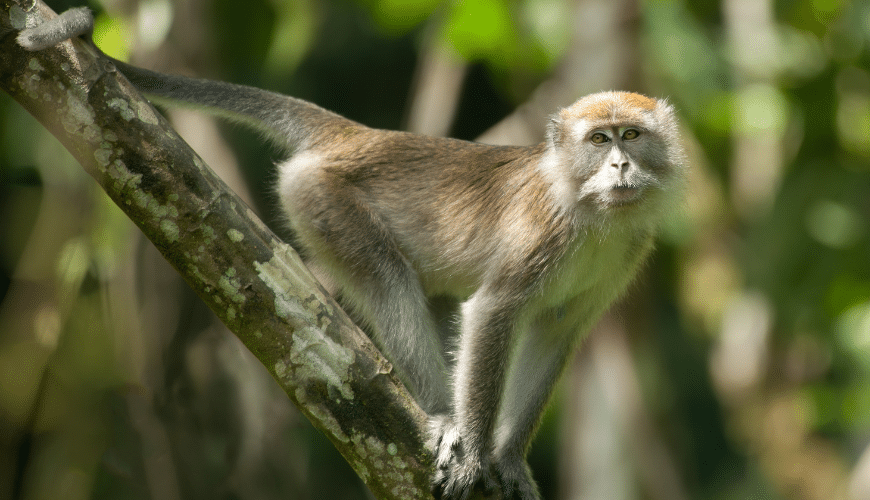
On May 19th we celebrated Endangered Species Day, dedicated to learning about and taking action to protect endangered and threatened species. 2023 also marks the 50th anniversary of the landmark Endangered Species Act—a silver lining in the face of a sixth mass extinction.
The Endangered Species Act (ESA):
- Establishes protections for wildlife (including fish) and plants that are listed as threatened or endangered,
- Implements plans for the recovery of the aforementioned,
- Establishes provisions of the Convention on International Trade in Endangered Species of Wild Flora and Fauna (CITES),
- Calls for interagency cooperation to avoid issuing permits for listed species.

Despite the Endangered Species Act working to protect more than 1,300 listed species, many considered endangered by the International Union for Conservation of Nature (IUCN) are not covered by the ESA. Most notably the long-tailed and southern pig-tailed macaques.
Macaques are the most common non-human primates used in biomedical research and are the majority of the 113,000 non-human primates reportedly used in research in 2021 by the United States Department of Agriculture.
Even with the populations of both the long-tailed and southern pig-tailed macaques declining between 40-50% over the past few decades, the animal research industry’s demand continues to climb.
The United States Fish and Wildlife Service (USFWS) has the ability to grant protections to vulnerable species who face a single threatening factor, and these macaques face more than five each. Beyond animal research, these threats include pollution, residential and commercial development, agricultural development including factory farming, and the pet trade. The ESA can make it illegal to import, export, take, possess, sell, or transport listed threatened or endangered species.
Macaques are largely recognized by experts as adaptable generalist primates. The sharp decline in their numbers can be attributed to a two-pronged issue: the failure of the USFWS to protect these macaques by granting them protections under the ESA and the continued reliance on ineffective animal models for biomedical research.
Macaques, along with species including mice, rats, pigs, and birds, are subjected to cruel experimentation despite scientific research that reveals subtle nuances in physiology, biochemistry, and genetic expression drive misleading drug development.
In fact, between 90—95 percent of drugs found safe and effective in animal tests fail during human clinical trials, primarily due to toxicities not predicted by animal tests or because of lack of efficacy.
We need to accelerate a shift away from animal experimentation, not only for the benefit of human health but to mitigate humanity’s role in the sixth mass extinction. Join us in protecting humans, animals, and the environment by supporting recent developments in medical science, such as human chip models, 3D printed human tissues, and organoids that more faithfully recapitulate human physiology than animal tests and have the potential to predict human safety much more accurately.

